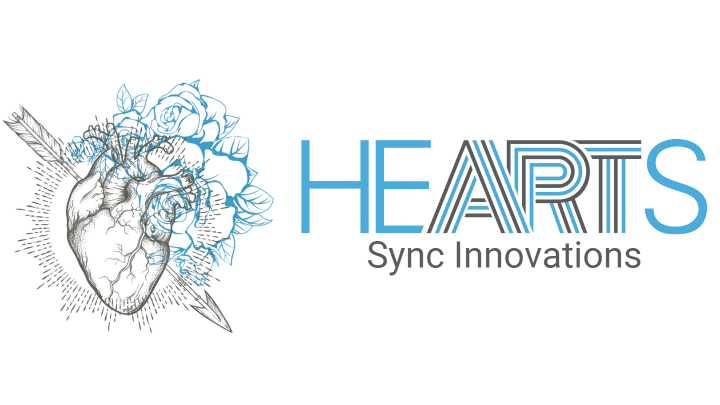Imagine 2035: Wearables measure not only your sleep but also your emotional resonance with colleagues, partners, and children. Teams synchronize meetings based on stress patterns, schools teach breathing techniques before algebra, and check-ups include an emotional fitness score. Sound futuristic? The building blocks are already on the table. Emotional intelligence is no longer a soft nice-to-have but a measurable lever for health, longevity, and high performance—and it starts with your next conscious in-breath and out-breath.
Emotional intelligence describes the ability to recognize, understand, regulate, and constructively use one’s own and others' feelings. Four core processes underpin it: perception, evaluation, regulation, and application of emotion. The crucial starting point is self-awarenessthe clear perception of one’s own emotional state and its triggers, because what you do not notice, you cannot control. Emotional regulationtechniques that deliberately influence internal states, e.g., breath control, mindfulness, cognitive reframing translates awareness into actionable ability. In a social context, conflict resolutionstructured strategies to transform tensions into cooperation determines whether energy flows into progress or friction loss. For high performers, this means that those who manage emotions competently protect their physiological resources, stabilize focus and relationships, and create the foundation for sustainable performance.
Emotional intelligence has a physical effect. Targeted breath control strengthens the parasympathetic nervous system, increases heart rate variability, and reduces stress hormones—a pattern associated with better resilience, lower anxiety levels, and improved emotion regulation [1]. Mindfulness-based training improves emotion regulation over months while reducing perceived stress and anxiety—effects that lower mental burden and indirectly address cardiometabolic risks [2]. Self-monitoring via smartphone promotes cognitive reframing and relaxation; in case studies, measurable reductions in anger, anxiety, and sadness occurred once people recognized their patterns and implemented interventions [3]. At the team level, training in conflict management and emotional intelligence reduces relationship conflicts and shifts response patterns from avoidance or control to problem-solving—providing protection against chronic work stress and performance erosion [4]. In short: Better emotion competence calibrates the stress system, stabilizes relationships, and creates physiological calm windows that promote regeneration, focus, and longevity.
Multiple lines of research paint a consistent picture. Reviews on breathwork show that slow, nasal diaphragm breathing—such as in the 5-5-2 pattern—shifts autonomic balance toward the parasympathetic, increases heart rate variability, and reduces anxiety, stress, and cortisol. These changes are associated with improved emotion control and are particularly relevant for high-stress environments, from first responders to clinical settings [1]. Randomized training on mindfulness among healthcare professionals proves that structured programs can improve emotion regulation for at least six months while simultaneously lowering stress and anxiety scores. This suggests sustainable, practical plasticity in coping with pressure [2]. Similarly, intervention studies in clinics demonstrate that workshops on conflict resolution and emotional intelligence not only improve the subjective climate but also reduce the types of conflicts themselves and strengthen adaptive problem-solving strategies—with measurable effects on team functions critical for performance and recovery [4]. Additionally, digital research provides a practical finding: In field studies, mobile tools for mood tracking and cognitive reframing enhance self-awareness and lead to noticeable improvements in emotions in everyday life—a low-threshold lever that facilitates access and implementation [3]. While online courses do not enhance emotional competencies in every measurement dimension, validated programs show significant gains in self-reported emotion perception and regulation, which persist even weeks after completion—suggesting that scalable, digital offerings can effectively train central EI components [5].
- Start a 2-minute mood log: Pause three times a day, name the emotion (e.g., “frustrated, 6/10”), note the trigger, and choose a response (reframing or short breathing). Use smartphone notes or an app—this increases self-awareness and creates quick learning loops [3].
- Use the A52-Breath pattern during micro-breaks: 5 seconds in, 5 seconds out, 2 seconds hold, for 3–5 minutes. Ideal before meetings, emails, or after context switches. Goal: noticeably calmer heart rate, clearer focus, less reactive behavior [1].
- Implement an 8-week mindfulness routine: 10–15 minutes daily (body scan, breath focus, open awareness). Track stress (0–10) and irritability weekly. Expected benefits: better emotion control, less stress and anxiety over months [2].
- Learn a conflict protocol: 1) Separate the topic from the person, 2) gather mutual interests, 3) generate options, 4) clarify next steps. Practice the framework in low-stakes situations; the goal is to shift from avoidance/control to problem-solving [4].
- Book structured EI training online (e.g., programs focused on emotion perception and regulation). Plan for 2 sessions/week for 4–8 weeks and test transfer to real conversations. Expect improvements in self-reported perception and regulation even weeks later [5].
In the coming years, emotion metrics, breathing training, and digital coaching will merge into a personalized regulatory system for your daily life. Expect validated, adaptive programs that can measurably enhance your emotional competence like VO2max—with direct dividends for health, relationships, and high performance.
This health article was created with AI support and is intended to help people access current scientific health knowledge. It contributes to the democratization of science – however, it does not replace professional medical advice and may present individual details in a simplified or slightly inaccurate manner due to AI-generated content. HEARTPORT and its affiliates assume no liability for the accuracy, completeness, or applicability of the information provided.













